Art in Italy 1500-1700: The Renaissance
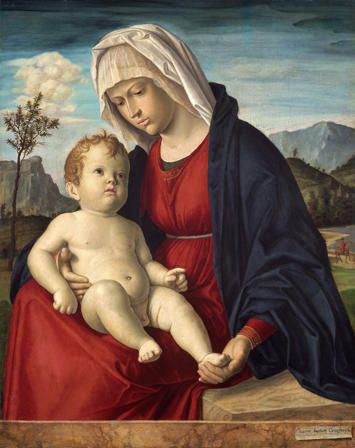
Cima da Conegliano (1459 - 1517), Virgin and Child, oil on board, about 1500, Purchased, 1977, NMW A 240
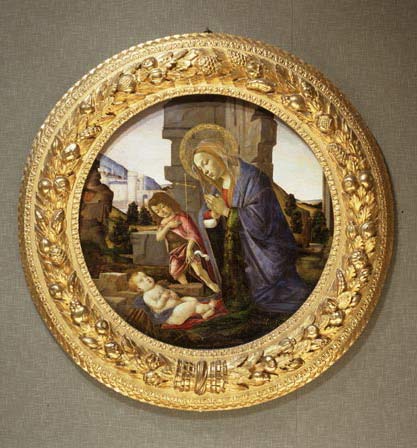
Workshop of Alessandro Botticelli (1447 - 1510), Virgin adoring the Child with the young St John the Baptist, oil on board, bequeathed by Gwendoline Davies, 1951, NMW A 241
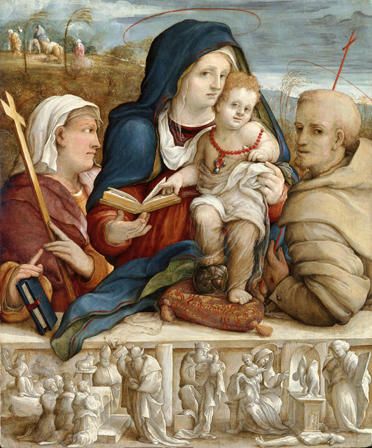
Amico Aspertini (c.1474 - 1552), Virgin and Child between Saint Helena and St Francis, oil on panel, purchased 1986, NMW A 239
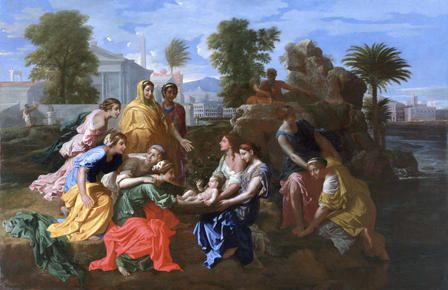
Nicolas Poussin (1594 - 1665), The Finding of Moses, 1651, oil on canvas, Purchase jointly with the National Gallery, London, with assistance of National Heritage Memorial Fund and the Art Fund, 1988, NMW A 1
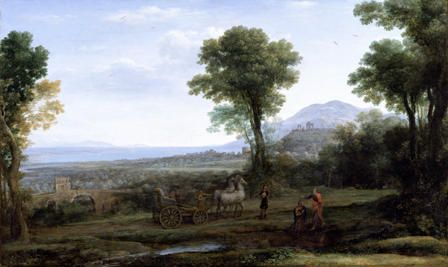
Claude Gellée, Le Lorrain (1600 - 1682), Landscape with St Philip Baptising the Eunuch, 1678, oil on canvas, purchased with the assistance of the Art Fund 1982, NMW A 4
In the fourteenth to sixteenth centuries, Italian scholars and artists developed a fresh interest in the ancient cultures of Greece and Rome. Architects and artists tried to recreate and improve on the ancient world, using a classical style for buildings and decoration, pictures and sculpture. Today this period is known as the Renaissance ('rebirth').
The heart of the Renaissance in the fourteenth and fifteenth centuries was Florence, the financial hub of Europe, and the most prosperous city in Italy. Supported by the Medici and other leading families, the arts flourished.
The Renaissance soon developed in Italy's other city states, both major cities like Venice and Milan in the north and smaller ones like Mantua and Urbino. From the late fifteenth century, Florentine artists like Leonardo, Michelangelo and Raphael worked in the Vatican in Rome for a series of Popes.
From the early sixteenth century Renaissance ideas spread to the rest of Europe, especially to France, the Netherlands and Germany, and later to Britain. Artists travelled abroad seeking work and sharing ideas, while the new technology of printing helped styles spread quickly.
Style and Symbolism
Artists of the Renaissance drew their inspiration from the art of classical Greece and Rome. They also tried to improve upon it, for example by perfecting the new system of linear perspective. Painted portraits and altarpieces, carved and cast statues, all show how artists studied the sculpture, gemstones, coins and medals of the ancient world. Architects used features from ancient Roman buildings — columns, arches, domes — in adventurous new ways. A wide range of everyday objects, from necklaces to wine cups, was produced to give a classical flavour to the lives of the wealthy. These were decorated with motifs taken from ancient sources.
The educated élite of the Renaissance acquired works of art to symbolize social and cultural virtues inherited by them from the ancient world. They displayed modern craftsmanship — maiolica pottery, glass, pictures, bronze figures and medallions — alongside classical antiquities. Classical references in the subject matter and decoration were highly prized, as were sophisticated design and skilful use of materials.
Later in the sixteenth century an exaggerated style known as Mannerism developed. From about 1600, the more dramatic and emotional Baroque style emerged, well suited to promote the religious themes of the Catholic Counter-Reformation.
Northern Landscape Artists in Rome
The Renaissance sparked a growing appreciation and interest in the natural world. Landscapes were often used as backgrounds for religious paintings. During the sixteenth century landscape painting gradually became more acceptable as an independent art form. In the seventeenth century landscapes became increasingly popular, although classical or biblical stories were still often included in the foreground.
Artists from all over Europe flocked to Rome in the seventeenth century, attracted by the beauty of the Roman countryside and its classical ruins. These artists developed the classical landscape style. The French artists Claude Lorraine and Nicolas Poussin painted figures in serene landscape settings. They depicted nature as calm and idyllic, with every tree and rock carefully placed to create a balanced, idealized whole.
How did these works of art come to Wales?
A few European paintings are known to have been in Welsh homes by the second half of the seventeenth century. By the 1770s art collecting was an accepted aristocratic pastime. Welsh landowners like
Sir Watkin Williams-Wynn acquired Italian, French and Dutch paintings of the seventeenth century. They also bought classical antiquities and commissioned work from foreign artists.Wales's nineteenth-century industrialization created new fortunes and new art collectors, among them
Gwendoline and Margaret Davies, best known for their Impressionist paintings; and saw a new interest in earlier Renaissance art.Some of the Old Master paintings in Amgueddfa Cymru once hung in Welsh country houses. Others were given to the Museum by Welsh collectors, and they tell a fascinating story of how art has been appreciated in Wales over many generations.